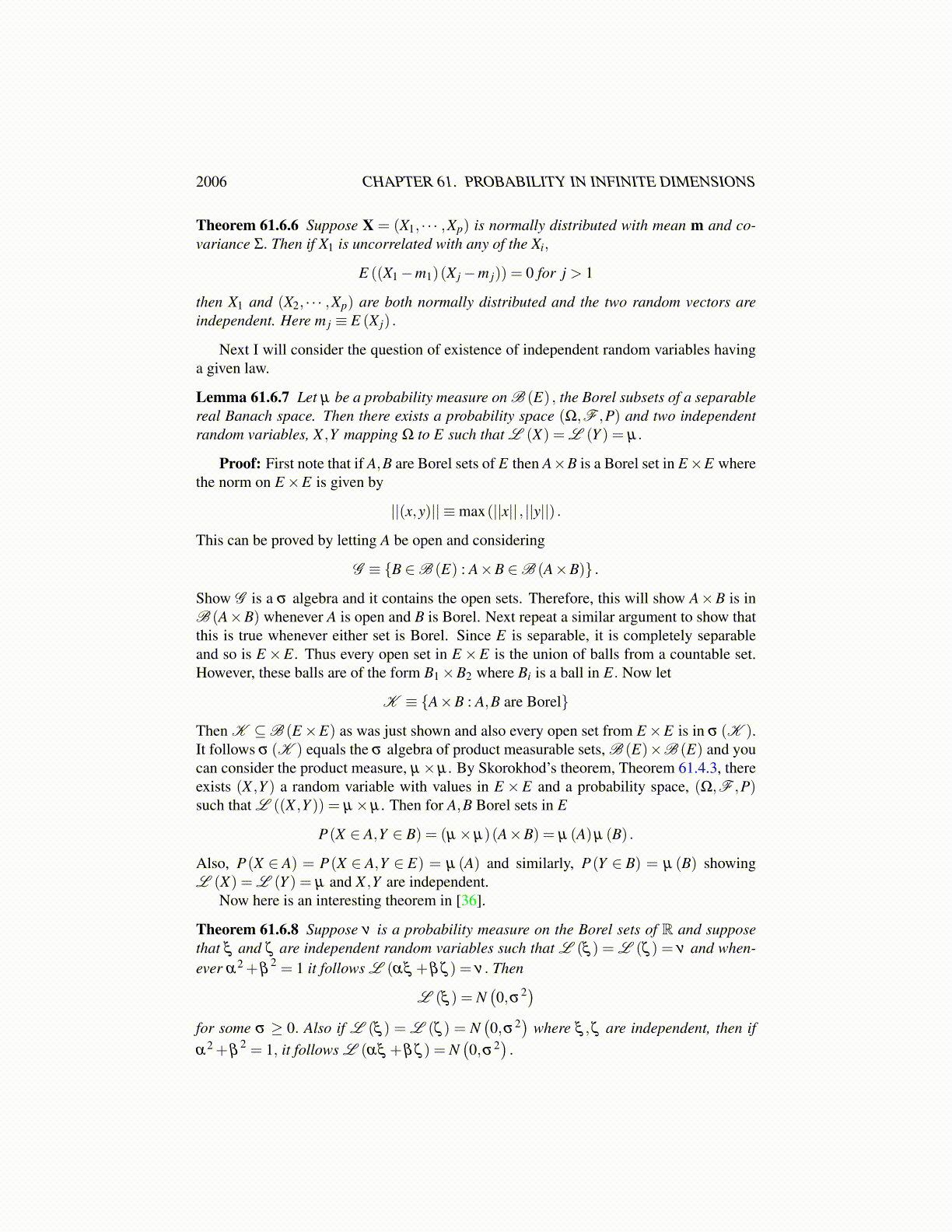
2006 CHAPTER 61. PROBABILITY IN INFINITE DIMENSIONS
It follows there exists a probability measure µ defined on σ (E ) and random variables,Xy for each y ∈ Λ such that whenever
{y1, · · · ,yp
}⊆ Λ,
µ{y1,··· ,yp} (Ay1 ×·· ·×Ayn) = µ
(∏y∈Λ
Ay
)
where Ay = R whenever y /∈{
y1, · · · ,yp}
. This defines a measure on σ (E ) which consistsof sets of RΛ.
By Lemma 61.5.1 it follows{
θ−1 (U) : U ∈ σ (E )
}= σ (A ) which equals σ (X) . De-
fine ν on σ (X) byν (F)≡ µ (θF) .
Thus ν is a measure because µ is and θ is one to one.I need to check whether ν works. Let x = ∑
mk=1 tkyk and let a typical element of RΛ be
denoted by z. Then by Kolmogorov’s theorem above,∫X∗
exp
(ix∗(
m
∑k=1
tkyk
))dν =
∫X∗
exp
(i
(m
∑k=1
tkx∗ (yk)
))dν
=∫
X∗exp
(i
(m
∑k=1
tkπyk (θx∗)
))dν =
∫RΛ
exp
(i
(m
∑k=1
tkπyk z
))dµ
=∫Rm
exp(i(t ·x))dµ{y1,··· ,ym} (x) = ψ
(m
∑k=1
tkyk
)where the last equality comes from 61.5.16. Since Λ is a Hamel basis, it follows that forevery x ∈ X ,
ψ (x) =∫
X∗exp(ix∗ (x))dν
This proves the theorem.
61.6 The Multivariate Normal DistributionHere I give a review of the main theorems and definitions about multivariate normal randomvariables. Recall that for a random vector (variable), X having values in Rp, λ X is the lawof X defined by
P([X ∈ E]) = λ X (E)
for all E a Borel set inRp. In different notaion, L (X)= λ X. Then the following definitionsand theorems are proved and presented starting on Page 1910
Definition 61.6.1 A random vector, X, with values in Rp has a multivariate normal distri-bution written as X∼Np (m,Σ) if for all Borel E ⊆ Rp,
λ X (E) =∫Rp
XE (x)1
(2π)p/2 det(Σ)1/2 e−12 (x−m)∗Σ−1(x−m)dx
for µ a given vector and Σ a given positive definite symmetric matrix.